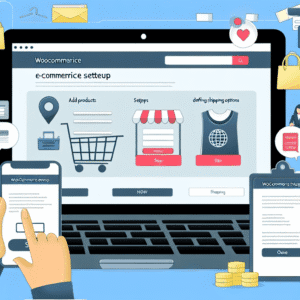In today’s competitive market, complexity often masquerades as sophistication. Many businesses fall into the trap of adding endless features, creating intricate user flows, or overwhelming their customers with too many options. But the most successful products—from the iPhone to Dropbox—excel because of their simplicity. They focus on solving one core problem extremely well. Simplification isn’t about offering less value—it’s about refining your offering to make it intuitive, accessible, and delightful to use.
In this blog post, we’ll explore why simplifying your product or service can significantly improve its appeal, adoption, and performance. We’ll look at real-world examples, actionable strategies to simplify, and how focusing on core features can elevate your brand and customer experience.
Why Simplicity Matters
1. Cognitive Load Is Real
Customers are inundated with information and options every day. When faced with a product that is too complicated, they’re more likely to abandon it in favor of a simpler, more accessible alternative. Reducing cognitive load—i.e., the mental effort required to use your product—leads to faster learning, smoother onboarding, and more frequent use.
2. Simplicity Builds Trust
Overly complex services can feel intimidating or confusing. Customers may wonder if they’re using it “wrong,” or if they’ll be trapped in unnecessary features they don’t need. A simple, focused product builds confidence and trust—it tells the user, “We understand your needs and we’ve built this just for you.”
3. More Features ≠ More Value
Every feature adds complexity. Feature bloat can dilute your product’s core purpose, increase development costs, introduce more bugs, and confuse users. By focusing on core functionality, you ensure that every part of your product adds real value.
The Business Benefits of Simplifying Your Product
1. Faster Time to Market
Simplified products are quicker to design, build, test, and launch. By honing in on what really matters, your team can avoid endless debates over secondary features and focus on delivering a polished, user-centric experience.
2. Lower Support Costs
A confusing product requires more customer support. Simplified interfaces and intuitive workflows reduce the number of support tickets, enabling your team to focus on proactive service rather than reactive troubleshooting.
3. Higher Conversion Rates
Customers are more likely to convert when they immediately understand your product’s value proposition. Simplicity removes friction in the buying journey—whether it’s signing up, making a purchase, or completing a task.
4. Improved User Retention
Users stick around when a product is easy to use and consistently delivers value. A streamlined, focused experience ensures that users return again and again, without the frustration that comes from figuring out how things work.
Focus on Core Features: How to Do It Right
1. Identify the Core Problem You Solve
Your product should be laser-focused on solving a key problem for your target audience. Ask yourself:
- What is the primary pain point our users face?
- What’s the “job to be done” they hire our product for?
- Which feature(s) are absolutely essential for solving this problem?
All other features should support this core mission or be removed.
2. Use the 80/20 Rule
Often, 80% of a product’s value comes from 20% of its features. Use analytics and user feedback to identify the most-used functions. These should be easy to access, seamless to use, and given visual priority. Everything else can be minimized or phased out.
3. Conduct Usability Tests
Sometimes, features that seem necessary on paper are not used at all—or worse, they hinder the user experience. Regular usability testing helps you uncover points of confusion and areas of unnecessary complexity. Simplification should be data-driven, not assumption-based.
4. Streamline the User Interface (UI)
- Avoid overcrowding your screens with buttons and links.
- Use whitespace to create breathing room.
- Guide the user with clear call-to-actions (CTAs).
- Group related information logically.
The goal is to lead the user through your product, not leave them to figure it out.
5. Offer Fewer but Better Choices
Paradoxically, offering too many choices can result in decision paralysis. Limit options to a few, high-quality ones. This principle applies to product tiers, onboarding paths, templates, settings, and more.
Real-World Examples of Simplification Success
1. Apple’s iPhone
Apple revolutionized smartphones not by having the most features, but by offering a seamless, intuitive interface. Early iPhones removed the physical keyboard, minimized buttons, and made touch navigation effortless. Even now, every new version prioritizes ease of use over feature sprawl.
2. Dropbox
Dropbox’s initial success hinged on a simple value proposition: “Put your files in this folder, and they’ll be accessible from anywhere.” It didn’t overwhelm users with storage settings or complex configurations. Its success came from doing one thing exceptionally well—file syncing.
3. Slack
While Slack has evolved into a robust platform, its early versions were lauded for their simplicity. It focused on solving a core communication problem for teams: reducing the noise of email with real-time chat. The simplicity of channels, search, and notifications made it immediately useful and sticky.
Common Pitfalls to Avoid
1. Over-Simplifying to the Point of Limiting
While simplification is key, it shouldn’t come at the expense of functionality. Users should still be able to do what they need to do. The balance lies in hiding complexity behind intelligent defaults or progressive disclosure.
2. Ignoring Power Users
While most users benefit from simplicity, some advanced users crave control. Consider creating tiers or advanced settings that are available but not intrusive. This ensures that your product remains accessible without alienating more technical users.
3. Cutting Without a Strategy
Not every simplification is good simplification. Removing features arbitrarily or without understanding user behavior can frustrate loyal customers. Make data-informed decisions and communicate changes transparently.
Strategies for Simplifying Services
Simplification isn’t just for physical or digital products—it also applies to services.
1. Clarify Your Service Offering
Avoid jargon. Describe what you do in plain, human language. Make it instantly obvious who you help and how.
2. Standardize Where Possible
Custom services can create unnecessary complexity. Where appropriate, develop standardized packages, onboarding processes, or workflows that are easier for both your team and your clients to navigate.
3. Automate Repetitive Tasks
Use automation tools to simplify recurring service activities like email updates, invoicing, or data collection. This improves consistency and reduces human error.
4. Set Clear Expectations
A streamlined service experience starts with clear communication. Let clients know what to expect, what’s included, and what their role is at every step.
The Role of Design Thinking in Simplification
Design Thinking offers a valuable framework for creating user-centric simplicity:
- Empathize: Understand what your users really need—not what you think they need.
- Define: Identify the key problem to solve.
- Ideate: Brainstorm multiple simple solutions.
- Prototype: Build lean, simplified versions of your product/service.
- Test: Observe how users interact and refine accordingly.
By focusing on the end-user experience at every stage, you can ensure that simplification leads to a more usable and desirable offering.
Metrics to Track the Impact of Simplification
To ensure your efforts are paying off, monitor the following metrics:
- User Activation Rate: Are more users completing onboarding?
- Time to Value (TTV): How quickly do users achieve success with your product?
- Customer Satisfaction (CSAT): Do users find the experience delightful?
- Feature Adoption: Are the most important features being used more frequently?
- Churn Rate: Are users sticking around longer?
Simplification often improves all of these metrics when done correctly.
Conclusion
In a marketplace filled with noise, simplicity is a powerful differentiator. By focusing on the core features that truly matter, and eliminating anything that doesn’t support your user’s goals, you can create products and services that are easier to understand, more enjoyable to use, and ultimately more successful.
Remember: simplification is not a one-time project—it’s an ongoing discipline. Keep asking yourself, “Is this the simplest way to deliver the value my customer expects?” If the answer is no, it’s time to revisit and refine.
In the words of Antoine de Saint-Exupéry, “Perfection is achieved not when there is nothing more to add, but when there is nothing left to take away.”
So simplify boldly—and watch your product or service soar.
Call to Action:
If you’re looking to simplify your product or service but aren’t sure where to start, begin with a user feedback session. Talk to your customers. Ask them what confuses them, what they love, and what they could live without. Then, take a red pen to your roadmap and start cutting the clutter.
Need help streamlining your UX or service offering? Reach out—we’d love to help you simplify for growth.






